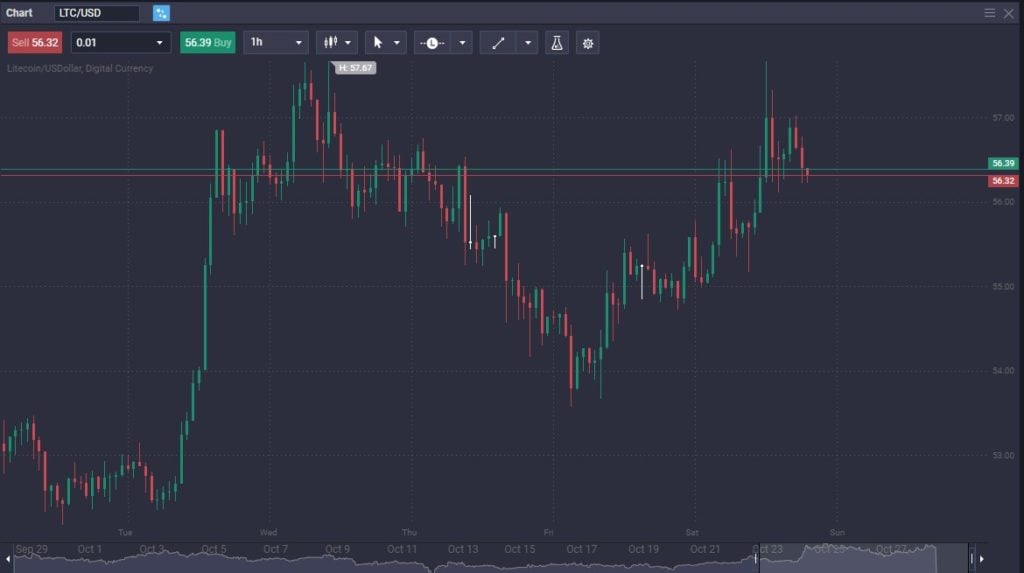Spoofing is a way to attempt to manipulate the market in your favor. If you spend any time trading, you will eventually hear the term “spoofing.” Spoofing is illegal, at least in most developed markets, but spoof trading does happen. However, with a bit of common sense and patience, you can avoid most of the detrimental effects of spoof trading.
What Is Spoofing?
“Spoofing” is a term used in trading that suggests nefarious order flow. Some traders will try to bend the rules to gain an advantage by spoofing, a form of exchange manipulation that, unfortunately, is easier to do in the age of computing. After all, the speed of most transactions can be thought of in nanoseconds at this point.
Spoofing is a tactic that is sometimes used to change asset prices, be it stocks, bonds, or even cryptocurrencies. Essentially, it is when traders will place a market order, either buying or selling, and then cancel before the order is ever fulfilled.
How Does Spoofing Work, and What is the Point of Spoofing Cryptocurrency?

Litecoin trading at PrimeXBT.
Spoofing involves placing either long or short-market orders and canceling them before the order is fulfilled. It is the practice of trying to initiate fake orders with no intention of ever seeing them executed. It means that somebody is spamming the market with orders, trying to get other traders to jump in and either buy or sell a security to send the market in that direction.
Example of Spoofing
Spoofing is a bit difficult in some of the more liquid markets, but you should remember that it happens even there. An example could be as follows:
- Financial firm owns a large amount of bitcoin.
- Traders from that firm place large market orders at prices under the market price.
- Other traders see enormous potential “buy orders,” jumping into bitcoin to front-run a potential bullish move higher.
- The price of bitcoin rises because of this, in a “self-fulfilling prophecy.”
- The initial financial firm makes a profit based on this action.
- The initial financial firm, at this point, may unload their bitcoin to the public at a higher price.
Does spoofing always work?
Not really. It’s a bit of an outdated method, although some algorithms are out there using this as a potential strategy. It takes significant computing power even to attempt this unless you are trying to spoof a tiny market. It’s much more common to see spoofing in these smaller markets than in bigger ones like Bitcoin or currency markets.
How Markets Typically Respond to Spoofing
Markets typically have a bit of a move in the direction of the potential spoof trade, but most often, they will return to normalcy rather quickly. The most effective spoofs are done in thin markets, so in the crypto world, it might be a very specialized crypto market or a market for a relatively new or unknown coin. However, at a much more liquid market such as Bitcoin or a large=cap stock, these moves tend to be very quick and therefore are less profitable than they once were.
Is Spoofing Illegal?
Spoofing is illegal in some countries, but other countries may still need to categorize it in their legal framework. It was part of the Dodd-Frank Act in the United States, which was signed into law in 2010. It is described as a “disruptive practice” in section 747 of the legislation, straight from the CFTC or US Commodity Futures Trading Commission.
There are also additional laws from the Securities and Exchange Commission and the Financial Industry Regulatory Authority. Spoofing, in general, is illegal in most developed markets. The SEC fined J.P. Morgan $1 billion in the fall of 2020 after the company was caught conducting spoofing activity in the precious metals market as an example of what can happen.

How to Avoid Getting Spoofed by Spoofers and Market Manipulators in General?
Computers do spoofing most of the time, and much quicker than you can catch on your own. The best thing that the retail trader can do most of the time is to stick to a trading strategy that works over the longer term. By trying to “front run others,” you are hoping to get involved in the market ahead of them and hope that they will successfully push prices higher or lower. Quite frankly, that is emotional trading without a plan.
Furthermore, if you trade higher time frames, a couple of texts one way or the other will make a massive difference in your account. By keeping your money management solid, you can deal with the occasional bounce in one direction and remain profitable over the longer term.
Conclusion
Spoofing continues to be an issue in most markets, even the developed ones. After all, even J.P. Morgan has been caught multiple times spoofing the bouillon markets and many other large firms. That being said, it’s probably worth noting that the fines these companies pay typically do not cover the amount made. In fact, for some of the big firms, it’s simply a “cost of doing business.”
That being said, it’s not something that most traders can do. After all, it would help if you had the significant computing power to get in and out of the market quickly, and latency can cause substantial issues. Spoofing is found in any market with a DOM or a list of buy and sell orders accessible for traders, sometimes called “Level II.” You are trying to get other people to follow you or move the market in the direction you wish it to go. However, you have to have a reasonable size to make that happen. If you have a $1000 account, you are not counted as being able to throw enough market orders out there to get the market moving in your direction.
Because of this, most traders need to focus more on avoiding falling victim to a spoofing move. The reality is that the easiest way to do it is not to scalp the market. In other words, spend a little bit more time in each trade, or focus on a little higher time frames. The little spoofing that goes on here and there will make a slight difference in a two-week move. Furthermore, the trader needs to pay close attention to their trading strategy because jumping in and out of the market based upon a potential spoofing move is trading via emotion and not necessarily a longer-term trading plan that pays over the long term. Remember, consistency will always be more important than just a few ticks here and there.
What is spoofing in trading?
Spoofing is sending market orders without the plan of ever having them filled. The idea is that markets will notice many orders underneath or above a market price and then try to jump in based on potential momentum. Before the market orders are filled, the spoof trader then pulls the orders. The idea is that the rush of momentum will help out an existing position in the market.
Can you spoof Cryptocurrency?
Yes, but most spoofing will be more effective in smaller markets. That being said, it isn’t easy to do so because most trading is also done with algorithms, which are much quicker than the average human.
Is spoofing allowed in crypto?
Technically, it depends on where you live. The thing about crypto is that it is an entire global market, so the local laws of the exchange or the trader may vary quite drastically. However, it’s worth noting that most other markets have laws against it, and crypto will almost certainly follow in its steps. Until then, you may have to deal with a bit of it, but regulation will be coming in the near future.
The content provided here is for informational purposes only. It is not intended as personal investment advice and does not constitute a solicitation or invitation to engage in any financial transactions, investments, or related activities. Past performance is not a reliable indicator of future results.
The financial products offered by the Company are complex and come with a high risk of losing money rapidly due to leverage. These products may not be suitable for all investors. Before engaging, you should consider whether you understand how these leveraged products work and whether you can afford the high risk of losing your money.
The Company does not accept clients from the Restricted Jurisdictions as indicated in our website/ T&C. Some services or products may not be available in your jurisdiction.
The applicable legal entity and its respective products and services depend on the client’s country of residence and the entity with which the client has established a contractual relationship during registration.




